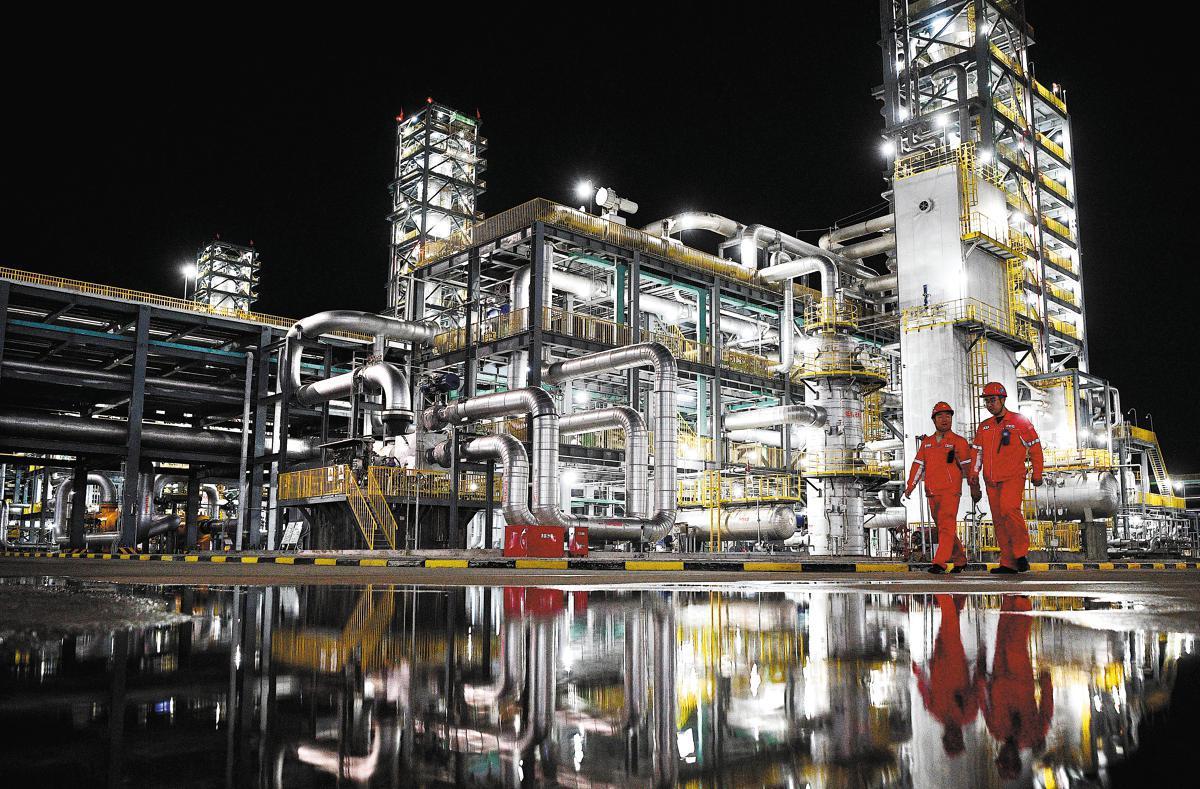
 0 Comment(s)
0 Comment(s) Print
Print E-mail China Daily, December 21, 2023
E-mail China Daily, December 21, 2023

Technicians from China National Petroleum Corp conduct an inspection at a natural gas processing facility of Changqing oilfield in Yulin, Shaanxi province, in July. [Photo/Xinhua]
China's State-owned enterprises are making all-out efforts to ensure adequate and stable heating in the country in response to the ongoing cold snap and heavy snowfall across regions over the past week.
As the country has seen sudden frigid temperatures, triggering a sharp increase in heating demand, State Power Investment Corp has been stepping up energy supplies to meet the growing power demand, with overall thermal coal inventories increasing to more than 18.5 million metric tons, which will last for more than a month, it said.
The company has also been diversifying energy resources and incorporating renewable options to enhance overall sustainability. It reported more than 29.3 billion kilowatt-hours of power generation since December, with renewable energy sources accounting for around 49.01 percent, it said.
On the other hand, natural gas production and supply have also been running at full swing at Changqing oilfield to ensure residents have warm homes during the winter, with daily natural gas output reaching 152 million cubic meters, said its operator China National Petroleum Corp.
The oilfield, located in Northwest China's Ordos basin, is the nation's largest oil-and-gas field, sending natural gas to more than 40 major cities, including Beijing and Tianjin. To ensure sufficient natural gas for this year's winter heating season, the oilfield has produced 49.2 billion cubic meters of natural gas so far this year, it said.
In addition to Changqing oilfield, other key energy suppliers in northern regions — such as Daqing and Tarim oilfields — have all kicked into high gear to meet the heating needs of households during the cold months.
CNPC said it has also been stepping up efforts to diversify its gas resources, including developing domestic gas, imported pipeline gas and imported liquefied natural gas. Annual gas supply provided by the company accounts for more than 60 percent of total consumption of the energy resource nationwide, it said.
China Petroleum & Chemical Corp, also known as Sinopec, launched the country's largest LNG storage tank last month in Shandong province, with a storage capacity of 270,000 cubic meters.
With an additional gas storage capacity of 165 million cubic meters, which can meet the gas demand of 2.16 million households for five months during the winter, the LNG tank will further bolster natural gas storage capacity and help meet peak-shaving and seasonal rebalancing demand in the country, it said.
An analyst said State-owned energy companies play a key role in guaranteeing ample energy and heating capacity to ensure reliable and sustainable energy supply.
Leading the charge, major energy corporations are investing in infrastructure upgrades to optimize the efficiency of power generation and distribution systems, said Luo Zuoxian, head of intelligence and research at the Sinopec Economics and Development Research Institute.
Strategic stockpiling of essential resources, along with improved coordination with regional authorities, have addressed potential challenges and minimized disruptions in heating services, Luo said.
The National Development and Reform Commission said on Tuesday that the country can secure sufficient energy supply for winter heating demand this year.
Storage of coal, a traditional key energy resource for heating, at the country's power plants has been above 200 million tons, sufficiently ensuring coal demand for heating and power generation, it said.
Moreover, the country is also striving to diversify its energy mix for winter heating to accelerate the energy sector's low-carbon shift, including nuclear energy, which has already been applied as an alternative energy resource for heating in China.
China Three Gorges Corp said it has been stepping up hydropower generation amid the extreme weather. The six hydropower stations operated by the company, including the Three Gorges Dam project — the world's largest hydropower project — and the Baihetan hydropower station, generate 700 million kWh of clean power everyday, with a peak maximum output exceeding 43 million kilowatts, a record high, it said.
The company has also been stepping up development of hydropower and electrochemical energy storage to overcome possible intermittency, randomness and volatility of new energy and ease pressure on the power system, the company added.
Go to Forum >>0 Comment(s)